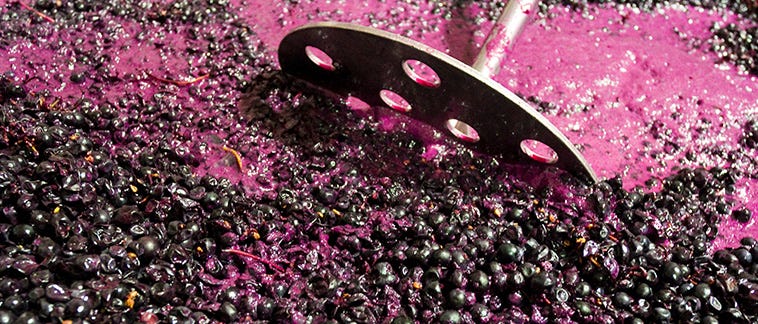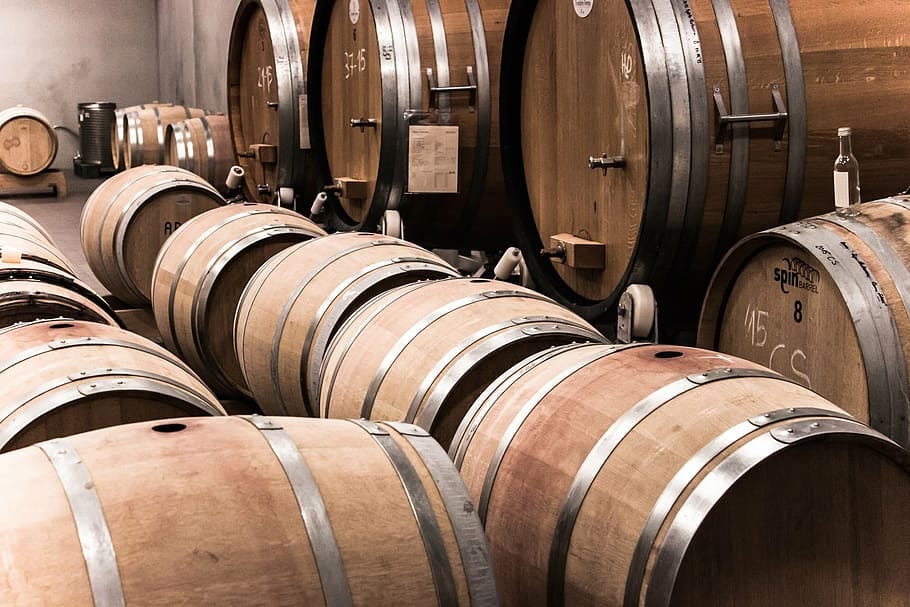Texture is up there as a word I use the most in my personal wine dictionary. Texture, in the context of wine, might be hard to visualise so I thought I’d explain in more detail.
Imagine the flavour of a bruised apple, now picture the feel and texture. It’s a thing! There is flavour and texture in a bruised apple and you’ll find this happens in wine too. I think of texture as layers within the glass and a sign of complexity. A wine is infinitely more interesting when it has texture. But how do you add texture to wine? What factors create it?
Texture started with tannins so for a long time texture wasn't widely discussed because it was mainly associated with red wines. Tannins can be chalky, silky or grainy as well as prominent or integrated. These tannin textures will depend on the grape variety, where the grape was grown and how it was made. For example, I always find the tannins of Sangiovese (Tuscan red grape) chalky. Another example is the level of extraction the winemaker chooses to apply during fermentation. Bear with me, as I get technical here for a minute. Picture a tank full of grapes and remember that red grapes ferment as they are picked, in their bunches. As the fermentation gets going the grapes crush under their own weight releasing juice. The winemaker can choose to leave the grapes to do their thing without intervening or they can punch the grapes down, pushing those on top to the bottom. This movement and pressure will extract more tannins and colour from the skins so the resulting wine will be more textural. This is the choice of the winemaker. Technical nugget done!
The winery is where a lot of the textural magic happens not just for reds but for white wines too. The choice of ageing vessel is important in answering the question of ‘do you want your wine to be textural or not.’ If the answer is yes, you would opt for oak barrels.
When used for ageing the wine (post-fermentation, this is where the young wine takes shape), oak barrels impart flavours of toast, woodsmoke and vanilla onto the wine. How new the barrel is will lead to more or less of these flavours (a barrel that’s already had wine in it won’t be as flavoursome). But it’s not just flavour that oak is used for, it’s texture.
Oak is porous so it allows tiny amounts of oxygen to interact with the wine inside. Too much oxygen is a bad thing and will lead to off flavours (this is oxidation and it is not your friend) but a little goes a long way. A little oxygen mellows young, bitey tannins and adds layers. If a wine is made in stainless steel tanks, no oxygen can come into contact with the wine once the lid is sealed on tight. These wines will be zippy and fresh with little texture, whereas the wines in oak will have more character, and rougher edges. The size of the barrel will also play a role. Small barrels (known as barriques in France) will impart more flavour whereas big Botti (commonly used in Piedmont, Italy) give off less flavour but add to the structure and texture of the overall wine.
Oaky wines get good and bad press. When I first got into wine, I loved oaky wines for their vanilla flavour and warmth but as my palette develops, I find that that oak needs to be subtle and not too obvious.
Grapes that respond well to oak are-
White: Chardonnay, Chenin Blanc, Viura (Rioja Blanco)
Red: Cabernet Sauvignon, Malbec, Shiraz, Tempranillo (Rioja Tinto).
Lees are another important part of winemaking that add texture. Lees are the by-product of winemaking that collect as sediment at the bottom of tanks or barrels. Lees start their life as active yeast but transform into lees once dead. They are the dusty bits of dead yeast cells, grape skin and pips. During fermentation, the yeasts feed off the wine but once fermentation is finished, the wine takes back control by feeding off the now dead yeast cells. Lees might sound disgusting but they are so important especially when they are stirred. The stirring of lees leads to creaminess in the wine, which you’ll notice more in white wines. The stirring of lees is more linked to white winemaking but it does happen with red wines too.
You can have creamy, buttery textures in wines, particularly white wines but another texture I often find in white wines is saltiness. This sounds odd but I’ve tasted many wines that have a salty side; salinity is as much of a texture as it is a flavour. I don’t necessarily mean the salt you’d put on your chips, more like a salty oyster shell or a salty rock. The saline lick at the end of the sip refreshes the palette whilst also leaving you wanting another taste. These wines are slicker and lighter on the palette compared to the buttery, creamy wines. The salty notes usually come from the flavours inherent in the grapes and the soils that they are grown on themselves but factors such as: cool fermentation temperature, avoidance of oak and lees stirring help. These salty wines are truly unique and refreshing and that’s mostly down to texture.
There is a whole world of textures waiting for you but in a quickfire round, here are some texture descriptors that you might find useful when tasting wine:
Velvet
Chalk
Silk
Metal
Round
Sharp
Smooth
Crisp
Next time you’re sipping a glass of wine, think about how the wine feels rather than how it tastes. Here are a few of my favourite textural wines to get you started:
White: 2022 'Sal da Terra' Albariño, Eulogio Pomares, Galicia, Spain
2020 Badenhorst Sout Van Die Aarde Palomino, Swartland, South Africa
Red: 2021 Syrah, Ben Haines, Yarra Valley, Australia
Rose: 2021 Picaro del Aguila Clarete, Dominio del Aguila, Ribera del Duero, Spain






